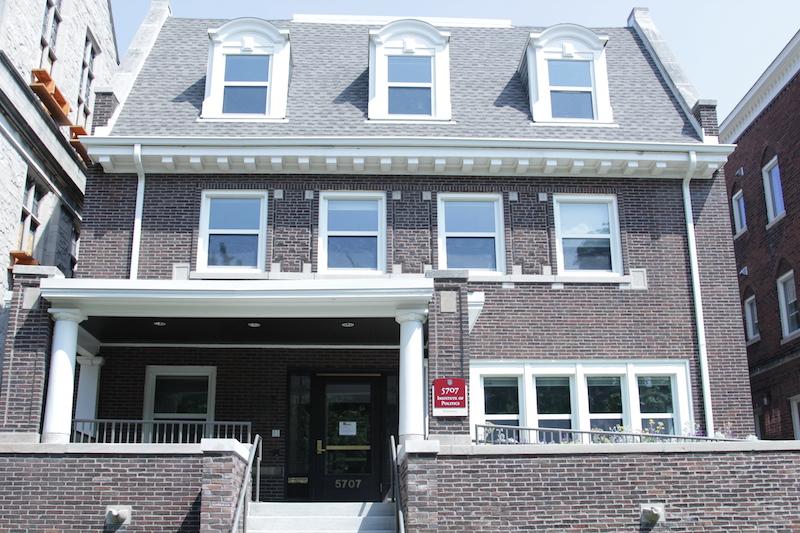At an Institute of Politics (IOP) event on October 18, assistant professor of political science at the University of Tennessee at Chattanooga Saeid Golkar and Iranian-American journalist Negar Mortazavi discussed the protests sparked by the death of 22-year-old Mahsa Amini. The event, titled “Taking it to the Streets: The Power of Iranian Women Now,” was moderated by IOP Speaker Series director Jennifer Steinhauer.
Amini was detained and killed by the Iranian morality police in September for allegedly violating Iran’s dress code, which stipulates that women wear a head covering and loose clothing over their arms and legs in public.
Mortazavi’s invitation to the IOP attracted controversy online, with thousands of comments on the IOP’s social media pages saying that Mortazavi “was not [their] voice.” Members of the Iranian diaspora allege that Mortazavi has ties to the government, an allegation she forcibly denies, noting that she has lived in exile from the regime since 2009.
The event was switched to a virtual format Tuesday morning because of security concerns, according to IOP communications director Koran Addo. IOP Pritzker fellow Rana Ayyub, who was originally scheduled to speak alongside Mortazavi, withdrew after receiving “numerous antagonistic online messages related to the event,” Addo told *The Maroon*.
“This is a continuation of past rounds of mass protests against the system. This time around, we’re seeing an intersectionality of the different communities,” Mortazavi said. “But at the core of this is essentially feminist uprising, a women’s uprising against years of oppression, discrimination, discriminatory laws against women, and the violent enforcement of these laws.”
Mortazavi emphasized the history of discrimination against women in Iran.
“When I talk about this system [of] repression and discrimination against women, it is rooted not only in just the law and state-sanctioned regulation. It’s also rooted in religion, tradition, and patriarchy that have been imposed on women for centuries.”
Golkar explained that human rights in Iran have worsened from the Islamic Republic’s conception in 1979, leading to the protests seen this fall. According to Amnesty International, the Iranian government applies the death penalty for crimes such as the consumption of alcohol and other drugs and same-sex relations. In 2021, at least 132 people were sentenced to death on account of drug offenses in Iran. The Iranian government also killed approximately 304 protestors and arrested thousands between November 15 and 18 of 2019, as part of a crackdown against nationwide protests.
“The Islamic Republic… gradually became a more repressive regime compared to the past. What we’re seeing now in 2022 is huge dissatisfaction, a huge resentment of the Iranians against the Islamic Republic,” Golkar said. “They want to have a regime change…but also, they want to change the social structure.” He added that those structures are not just about women’s freedom, as evidenced by the most recent protest, but also environmental, political, social, and economic rights.
Mortazavi detailed the differences in the extent of protesters’ demands.
“Some protestors want an end [to the regime], a system change, and don’t see any avenue for change in the system. But we’re also hearing smaller, concrete demands, such as the abolishment of the morality police.”
Golkar claimed, however, that reform would not be enough to address citizens’ concerns.
“The Islamic Republic is unreformable structurally, and I don’t have hope for any meaningful reform in Iran in the years to come,” Golkar said. “Even if you want the morality police to go or have the freedom of choosing your clothes, you cannot have that under the Islamic Republic.”
Mortazavi expressed the uncertainty of the future of the protests. Prior to 2022, there have been significant movements protesting the Islamic Republic for economic, social and political reasons in 1999, 2009, 2018, and 2019.
“If a regime change does happen, what’s next? [The protests] are from a generation who has seen the impacts from the 1979 Revolution. What was promised then versus what materialized was very different, and this worries a lot of Iranians,” Mortazavi said. “The protests are very incredible and unique, but [the violence] could get worse. It’s a messy situation.”










Christoph Carl / Oct 28, 2022 at 2:46 pm
“If a regime change does happen, what’s next?”
“The protests are very incredible and unique, but…”
But what?!
How miserable are you, Negar Mortazavi. Shame on you!
Fart Bort / Oct 30, 2022 at 7:54 pm
In no way do these comments suggest opposition to the protests. These are questions that must be answered now or soon after a hypothetical regime change. The revolution of 1979 faced the same questions and the ‘what next’ aspect being answered with an Islamic Republic resulted in a debatably worse regime that the Shah’s regime. Also the only route to regime change at this time is through violence which does have real social costs and needs to be taken into account. The Revolutionary Guard is unlikely to stand down without violence even in the event that the Ayatollah’s deteriorating health catches up to him.